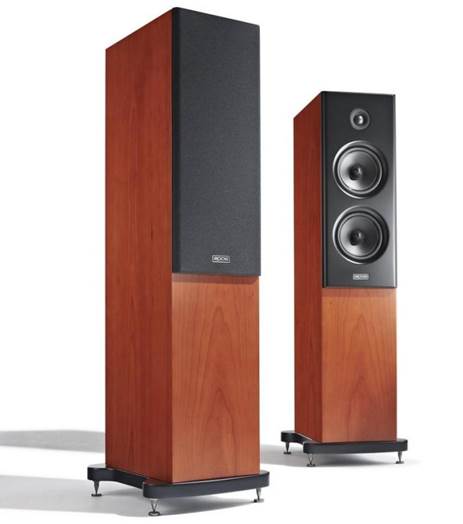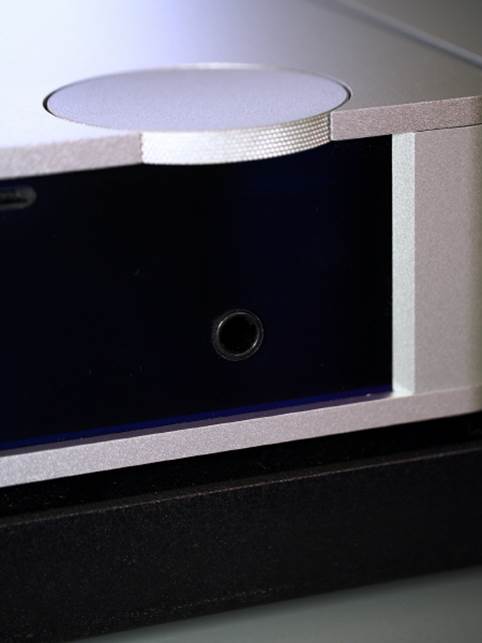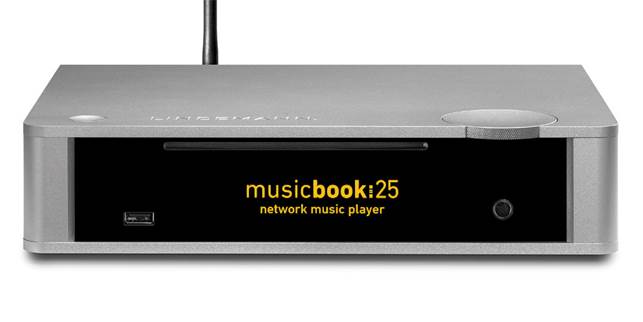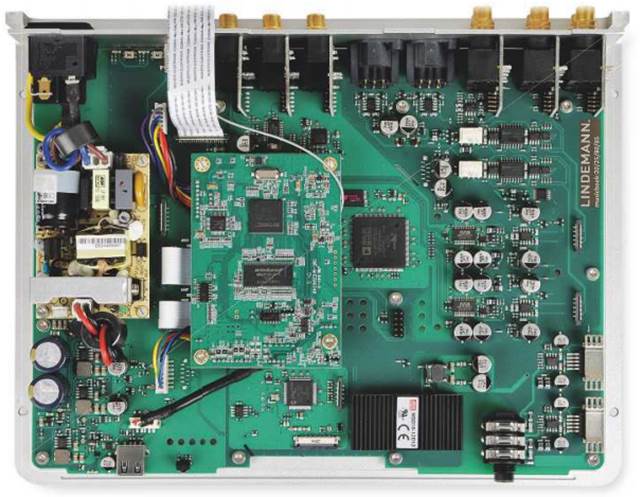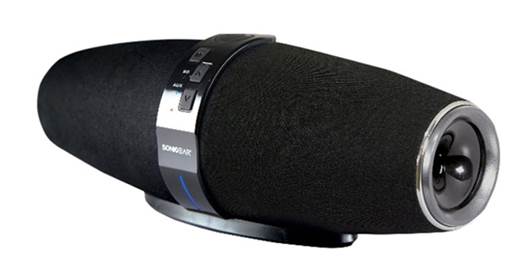While many well-known ‘manufacturers’ get their products built in China, there are still not that many Chinese companies that have managed to establish a profile as strong as that of Opera Audio from Beijing. The fact that Opera’s Consonance Cyber-100 amplifier celebrates its 15th anniversary shows just how well established this brand has become.
The Cyber-100 is an integrated amplifier with KT88 or 6550 output pentodes operated in a Class A, pushpull configuration. It has a specified output of 35 watts per channel and separate eight and four ohm taps on its output transformers. What distinguishes the anniversary edition from its predecessor, which is still in production, is the use of valve rather than solid state recitification in its power supply. This has always been a preferred approach where sound quality is concerned, but inevitably adds to cost. The other difference is in appearance; the anniversary has a black anodised chassis with an alloy rather than wooden top over the transformers.
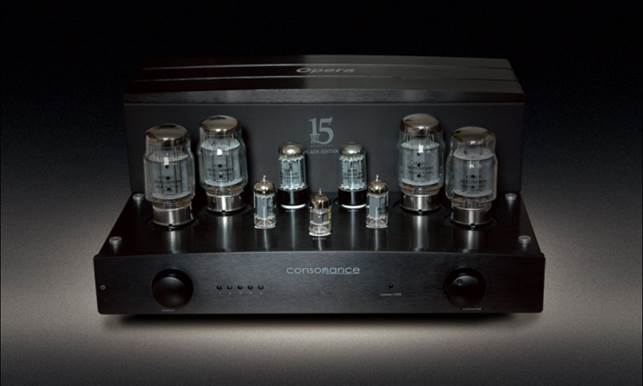
Cyber-100 15th Anniversary black edition
The ironwork within is hand wound by Opera with a nonsymmetrical configuration that’s designed to make power pentodes like the KT88 function and sound like single-ended triodes. While it might make more sense to simply buy an SET amp, such as the Cyber 300B series in the Consonance range, such things are rarely powerful. Personally I prefer the grip of push-pull, but if you have high sensitivity speakers SETs have a magic that few technologies can match.
The Cyber-100 is self biasing for the output tubes and drives each pair with a 5687 (12BH7) triode. It employs a rectifier circuit that combines a 5AR4 EH with Philips electrolytic capacitors, and the input driver is a single ECC83. The UK distributor is offering the Anniversary edition with upgraded output tubes in the form of Shuguang Treasure Series KT88s for an extra $330, which represents an $140 saving on buying them separately. The valves on this amp as it was delivered were Russian Electro Harmonix types, but AA Acoustics tells me that Consonance also supply it with JJ Electronic valves.
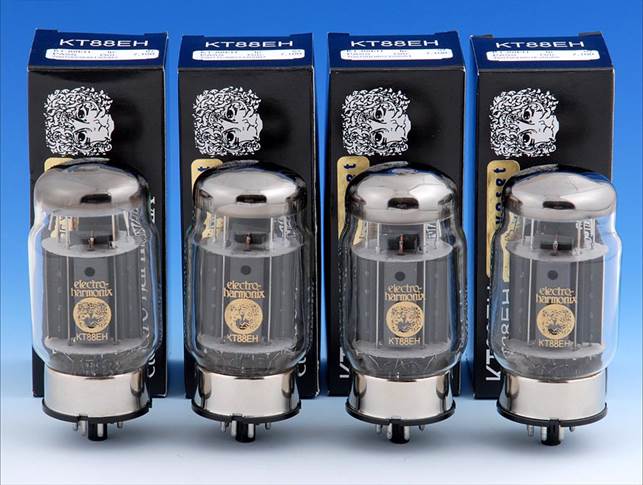
Electro harmonix KT88
Fit and finish is extremely high on this amplifier; the use of brushed alloy casework and deep RCA phono socketry give it distinctly ‘un-Chinese’ feel. Even the feet are nicely considered, which is uncommon. The speaker terminals and control knobs are of decent quality that’s appropriate to the price, as is the remote control brick. The latter is metal and oddly square shaped, but does offer control of volume and input as well as transport controls for Consonance CD players via ball shaped buttons. The German-made power switch is located on the amplifier’s side, in order to keep the front lines simple. The amp has five inputs and a tape output all via single-ended RCAs only, balanced operation being pretty scarce with amps of any stripe at this price and all but unheard of in valve amps. As you might imagine, it’s a substantial beast; the spec only gives packed weight, but very little of that 25kg is packing.
The ‘none more black’ look is very cool, but a bit of guidance might help. In particular, the loudspeaker terminals are not specifically marked for ‘left’ and ‘right’. This is not a big deal, as they adhere to the intuitive standard of left going to left and right to right, but someone with the IQ and streetsmarts of a reviewer could end up getting this wrong. Oops.
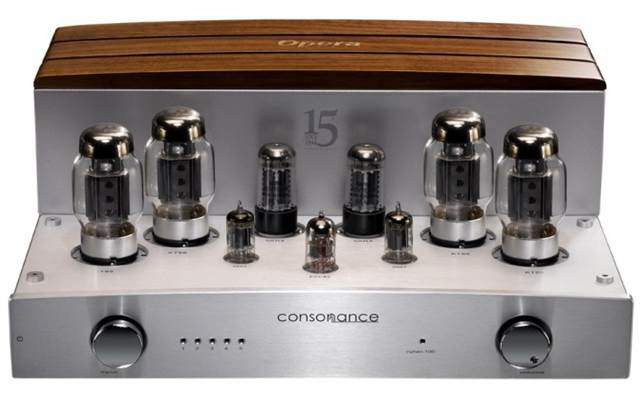
Cyber-100 15th Anniversary standard version
As I had the Vivid Giya G3 at the same time as the Cyber-100, I used that unlikely partner first. It’s not a typical choice for a valve amp, but has an average 87dB sensitivity and seemed to work well. The sound produced by this pairing was highly encouraging from the off; it delivered strong leading edges, reasonable bass power, and excellent speed. It also became apparent pretty quickly that it has a considerably cleaner midband than my ATC P1 power amplifier, which sounds a little grubby by comparison. The Cyber-100s nimbleness combined with decent low end control was a pleasant surprise. Equally pleasing is the sense of focus to the image; it’s not big and soft as can be the case with valves. If anything, it’s restricted in scale, with the Vivids at least.
As ever with valves acoustic instruments make the best impression, so Gregorio Paniagua’s ‘La Folia’ sounded beautiful – the original instruments revealing their rich, sonorous tone and the space in the recording opening up to let those instruments express themselves. I also enjoyed Melanie de Biasio’s band on her No Deal album [Play It Again Sam]. Here, the off-beat drum work was what caught my ear. The Consonance has little or no apparent overhang. Each note stops as quickly as it starts, so rhythmic variations are easy to appreciate. Out of interest, I compared the two impedance tappings on the amp to see if the four Ohm one initially chosen was the best, the eight Ohm option opened things up quite nicely but took some of the weight from the bottom end. In the end I preferred the focus of the four Ohm option, it’s a little darker which suited Melanie’s work to a T.
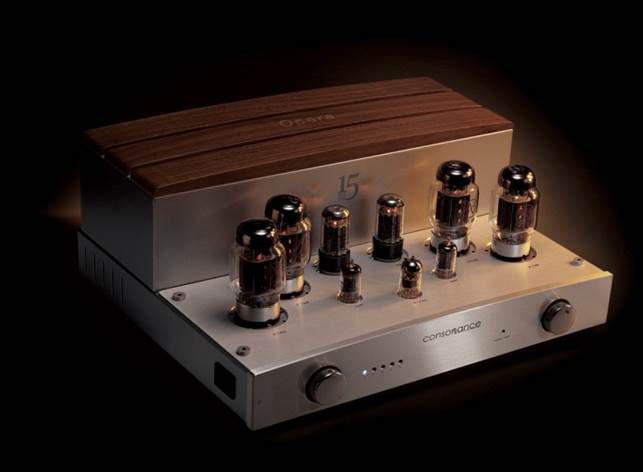
Cyber-100 rear view
An older sound is to be found on Henry Threadgill’s ‘Bermuda Blues’ [You Know the Number, RCA Novus]. The rhythm section on this delivered its groove with a real snap and some surprising low end from the kick drum; a lot was coming through. I took the opportunity to contrast the CD and 24/96 HD Tracks versions of Fleetwood Mac’s ‘Oh Daddy’ on Rumours. On this set up, the CD version has more obvious bass and greater stage width, while the hi-res file sounded more natural and nuanced. In both cases, the signal was being supplied by the CAD CAT transport and 1543 DAC, rather an effective pairing as you’ll discover next month.
Moving the Vivids out of the room and replacing them with my reference PMC fact.8s (another 87dB sensitivity design) meant a drop in resolution but paradoxically, this created a sense of increased openness. Margo Timmin’s voice came across in powerful style, but I did miss the attack of transistors with other pieces of music. By contrast the agility that the Consonance has across the band means that you hear an awful lot of what counts in the music without any sense of grain. Users of most solid state amps become inured to this quality over time, but when it goes away for a while and you switch back it’s very obvious. It’s what makes valves so enduring and the reason why so many seek the best compromise of qualities from the two technologies.
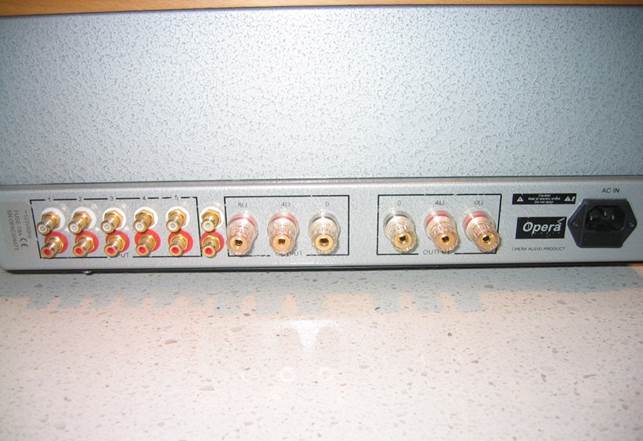
Cyber-100 connectivity
The only area that this pairing of PMC and Consonance falls down in is imaging. This could be wider, higher, and deeper, and the sound does not escape the speakers as well as it can – you can point to them with your eyes closed. The Triangle Alpha Signatures were more appropriate speakers; they are magnificent, full-height beasts with a reputation for being valve friendly. Schubert’s Impromptus (Krystian Zimerman, DG) were absolutely delightful; the speed and clarity of the amplifier really came into their own, and produced a result that was pretty engaging even for a classical philistine.
I even got around to rolling some tubes for the first time – a process encumbered by the need to warm the things up before a comparison could be made, but one that revealed the greater refinement and richness of the Shuguang Treasures. The Electro Harmonix deliver a starker and relatively simplified version of events that makes the extra charged for the ‘black’ valves seem like a pretty good deal. All in all, this amplifier looks like a pretty good deal, too. It’s well finished, has sufficient power for real world speakers, and if you enjoy acoustic music, will be hard to beat with solidstate alternatives. What’s best about it, however, is its ability to engage the listener, to make you close your eyes and enjoy the music, and that, after all, is what living is all about.
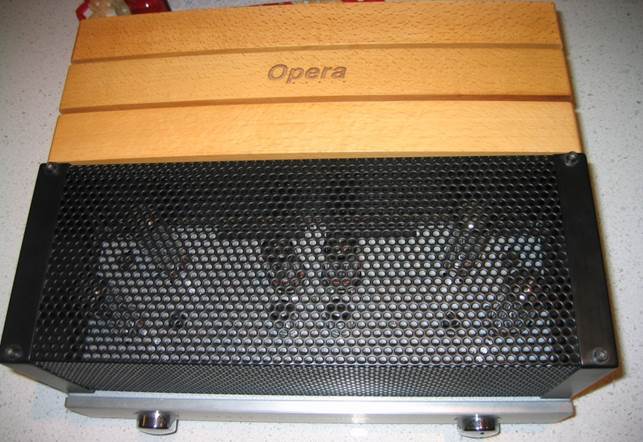
Cyber-100 overhead view
| Technical Specifications
· Circuit Type: Class A, push-pull amplifier · Power Output: 35 watt, RMS 1kHz · Input Sensitivity: 220mV · Noise and Hum: -90 dB below full output · Frequency Response: (-3dB points at 10 watt) 6Hz-50kHz · Tubes: 1 ea – ECC83 Input; 2 ea – 12BH7 Driver; 2 ea – 5AR4 Rectifier; 4 ea – KT88/ 6550 Output · Resistors: 1% Metal Film · Input Impedance: 100k ohms · Output Impedance: 4 , 8 ohms. User selectable · Consumption: 290watt · Output Interfaces: 1 groups (RCA) · Input Interfaces: 5 groups (RCA) 1,2,3,4,5 · Overall Negative: Feedback Little (-6dB) · Warm-Up Time: 3 Minutes · Dimensions: 430 (L) x 380 (W) x 190(H) mm · Weight: 25kg (packed) |
